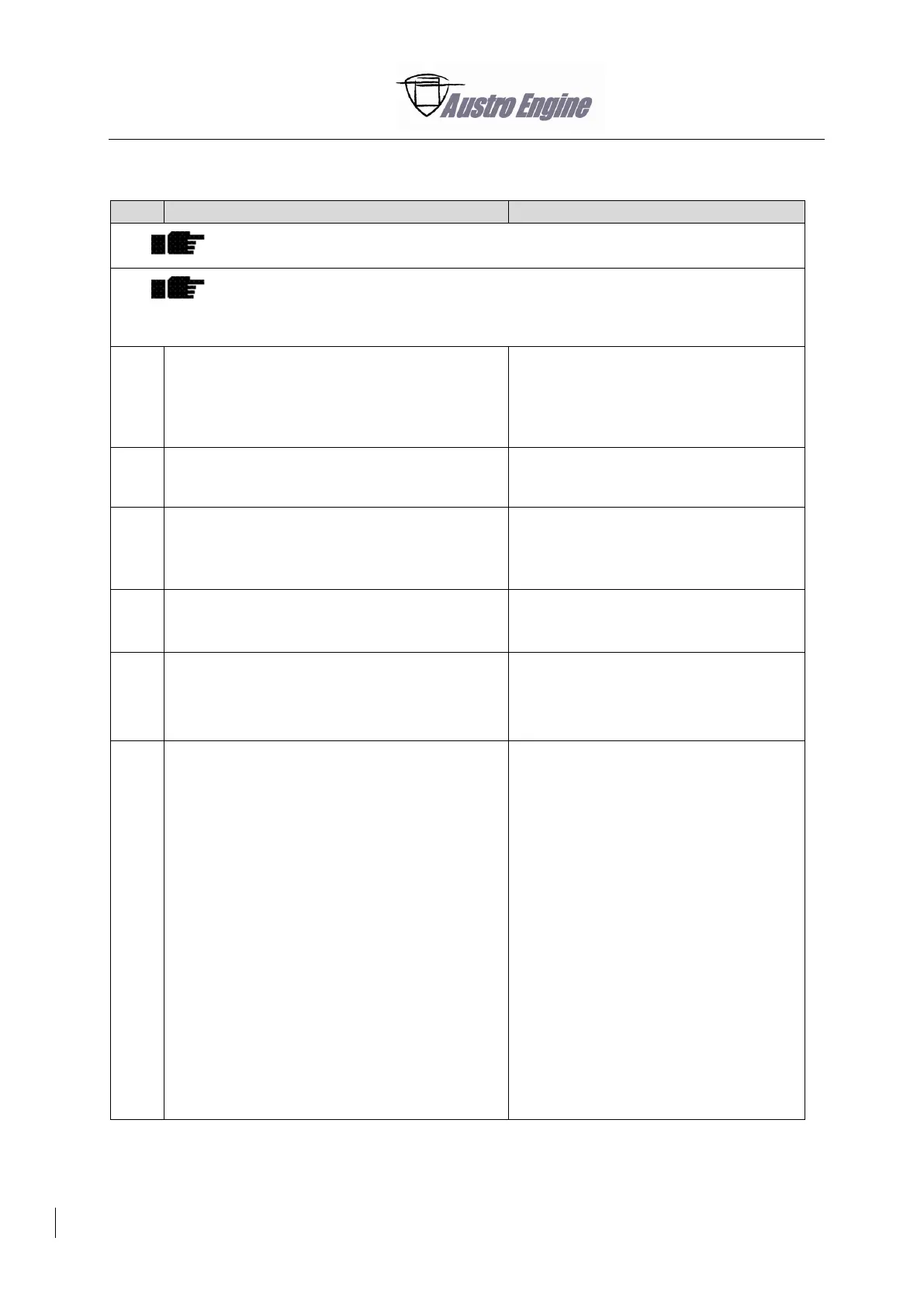C. Engine Harness Routing General Instructions
Before you install the harness on the engine block, read Paragraph A and B.
The herein described installation of the engine harness only describes the
installation without any customer/aircraft manufacturer installation (e.g. Firewall
Forward Lit). Depending on the engine position, refer to aircraft manual for
intended installation.
Make sure there is sufficient clearance between
the engine harness and other parts.
This will prevent chafing or abrasion
against the engine or other components.
Damage to the insulation will cause
short circuits, malfunction or incorrect
equipment operation.
Make sure that the wires and cables routing will
not touch extreme hot engine areas (exhaust
pipes).
This will prevent insulation break down.
Make sure there is sufficient clearance between
the engine harness and the fluid lines.
At least 50 mm distance from any
flammable liquid fuel line or other low
voltage wiring that goes into a fuel tank.
This will prevent an ignition hazard.
Examine the electrical connections for rub
parts, damage and corrosion.
Pull lightly to make sure they are not loose.
Examine the wire routing:
- Make sure it has loops.
This will prevent the fluids or condensed
moisture from running into the wires
and cables dressed down to a
connector, terminal or junction.
Make sure that the bend radius is correct.
For bends in wire groups or
bundles:
- The minimum bend radius must
not be less than 10 times the
outside diameter of the largest
wire or cable.
For harness branches with
diameters less than 2 cm which
connect to an actuator or a sensor:
- The minimum radius must be 3
times the diameter of the wire
or cable.
For cables installed on supported
cables:
- The radius can be 3 times the
diameter of the wire or cable.
Where it is not possible to install the
wiring with the correct radius:
- Apply protection to the bend
(insulated tubing).
